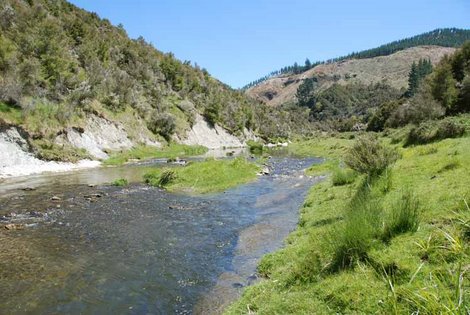
By Bill Ward, Native Plant Society of Texas
What is the most precious natural resource in the Texas Hill Country? For most people the answer to that question is a no-brainer. Water, of course! Surface water or ground water? There you might get different answers, but those “in the know” would think this is a dumb question.
That’s because around here, most surface water and ground water are part of the same hydrologic system. They shouldn’t be considered separately, especially here in this expansive area of karst limestone terrain.
Groundwater issuing from springs is the source of most big creeks and rivers in the Hill Country. Stream beds are the main zones of recharge for our aquifers.
In other words, what may be ground water in one area may become surface water in another area. And that surface water may infiltrate underground in another area. All part of the same hydrologic system.
If, as most people would agree, the quality and quantity of natural water is of utmost importance in the Hill Country, doesn’t it stand to reason that springs and streams are the habitats we most want to preserve and protect? Yet, in many places our creeks are under assault!
For example, in one of Kendall County’s neighboring counties plans are underway to run sewage lines up the limestone creek beds. Never mind that creeks are delicate areas of groundwater recharge and are the conduits which supply water to the larger streams and lakes.
Most of the assaults on the Hill Country riparian ecosystem are more subtle than the laying of sewage lines. There is widespread modification of stream habitats, and thus widespread modification of the hydrologic system, by removal of native riparian vegetation during ever-increasing cultural modifications.
Construction, “flood control,” “land improvement” and too much browsing by livestock and the overabundant deer, all generally remove some of the very native vegetation that is helping maintain quality and quantity of the water system.
In the natural riparian system, diverse grasses, sedges, reeds, wildflowers, woody shrubs, small trees and large trees grow along the edges of surface water. This native-plant diversity is important in stabilizing banks and maintaining water quality and quantity. Trees alone cannot do the job.
As my friend Rufus Stephens likes to point out, it is not only the above-ground foliage that is lost when plant diversity is decreased by human “improvements” or animal over-browsing. A vast network of roots also is removed.
Dense root systems are like sponges that soak up large amounts of infiltrated water and then can provide base flow to streams. Where stream-bank plant diversity is reduced, streams more easily go dry during droughts.
Another major consequence of reducing natural vegetative cover and root systems is decreased infiltration of water that flows off the land surface. This leads to increased frequency and severity of flooding and, of course, to increased bank erosion and other modifications of the stream habitat.
And this, in turn, leads to decreased quality and quantity of the water system. It’s a vicious sequence of changes better left unstarted.
Do you know why New York City doesn’t have to treat its drinking water? It is because of good land stewardship in the Catskill Mountains watershed. The determining factor in the amount and purity of that drinking water is the health of the native vegetation in the watershed.
Wouldn’t you hate to think UpState New Yorkers were smarter about managing their land and water system than Central Texans?